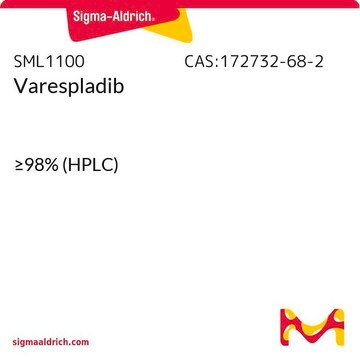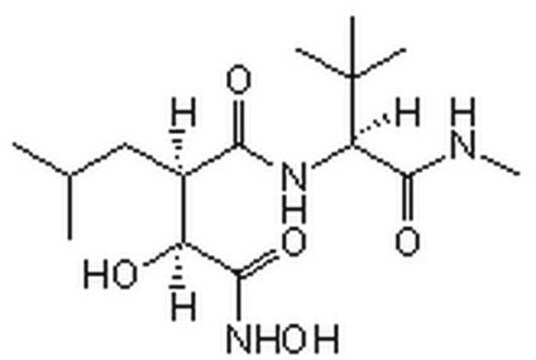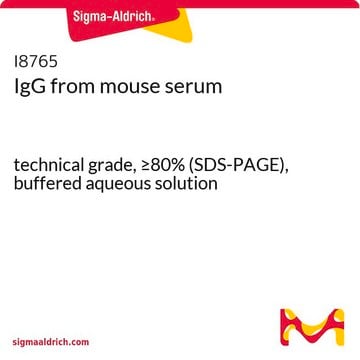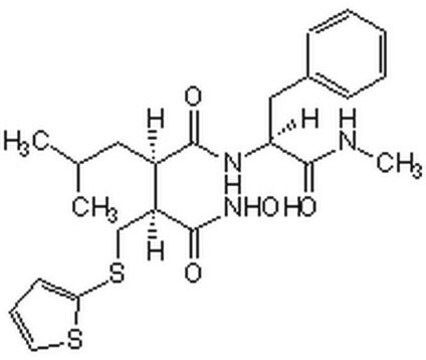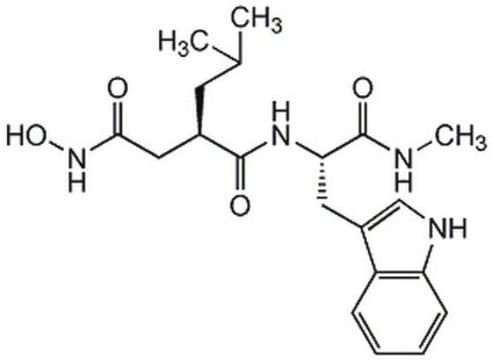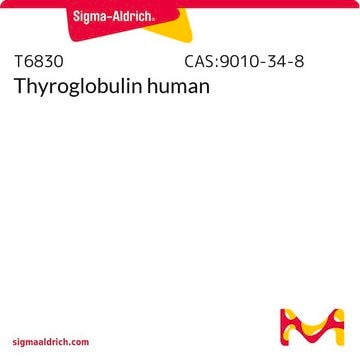M2699
Marimastat
≥98% (HPLC), solid, MMP inhibitor
Synonyme(s) :
BB2516, (2S,3R)-N4-[(1S)-2,2-Dimethyl-1-[(methylamino)carbonyl] propyl]-N1,2-dihydroxy-3-(2-methylpropyl)butanediamide
About This Item
Produits recommandés
product name
Marimastat, ≥98% (HPLC)
Niveau de qualité
Pureté
≥98% (HPLC)
Forme
solid
Solubilité
DMSO: ≥20 mg/mL
Conditions d'expédition
wet ice
Température de stockage
−20°C
Chaîne SMILES
CNC(=O)[C@@H](NC(=O)[C@H](CC(C)C)[C@H](O)C(=O)NO)C(C)(C)C
InChI
1S/C15H29N3O5/c1-8(2)7-9(10(19)13(21)18-23)12(20)17-11(14(22)16-6)15(3,4)5/h8-11,19,23H,7H2,1-6H3,(H,16,22)(H,17,20)(H,18,21)/t9-,10+,11-/m1/s1
Clé InChI
OCSMOTCMPXTDND-OUAUKWLOSA-N
Informations sur le gène
Application
- metalloproteinase 2/9 (MMP2/9), to study its effects on exercise-mediated interleukin-6 (IL-6) release in mice
- metalloproteinase, to determine protease activity in Pseudomonas aeruginosa cultures
- metalloproteinase 10 (MMP10), to study its effect on monoclonal antibody H3 binding to MMP10
Actions biochimiques/physiologiques
Code de la classe de stockage
11 - Combustible Solids
Classe de danger pour l'eau (WGK)
WGK 3
Point d'éclair (°F)
Not applicable
Point d'éclair (°C)
Not applicable
Certificats d'analyse (COA)
Recherchez un Certificats d'analyse (COA) en saisissant le numéro de lot du produit. Les numéros de lot figurent sur l'étiquette du produit après les mots "Lot" ou "Batch".
Déjà en possession de ce produit ?
Retrouvez la documentation relative aux produits que vous avez récemment achetés dans la Bibliothèque de documents.
Les clients ont également consulté
Notre équipe de scientifiques dispose d'une expérience dans tous les secteurs de la recherche, notamment en sciences de la vie, science des matériaux, synthèse chimique, chromatographie, analyse et dans de nombreux autres domaines..
Contacter notre Service technique
